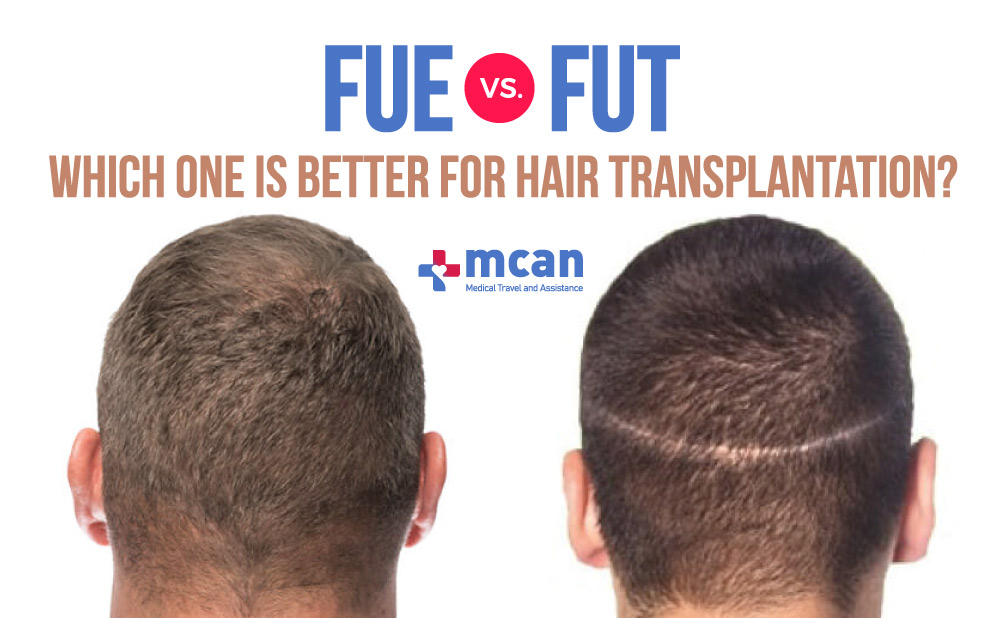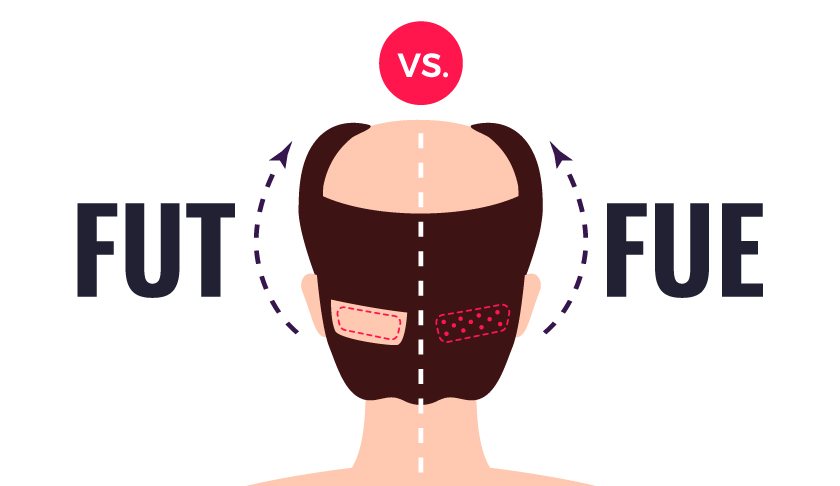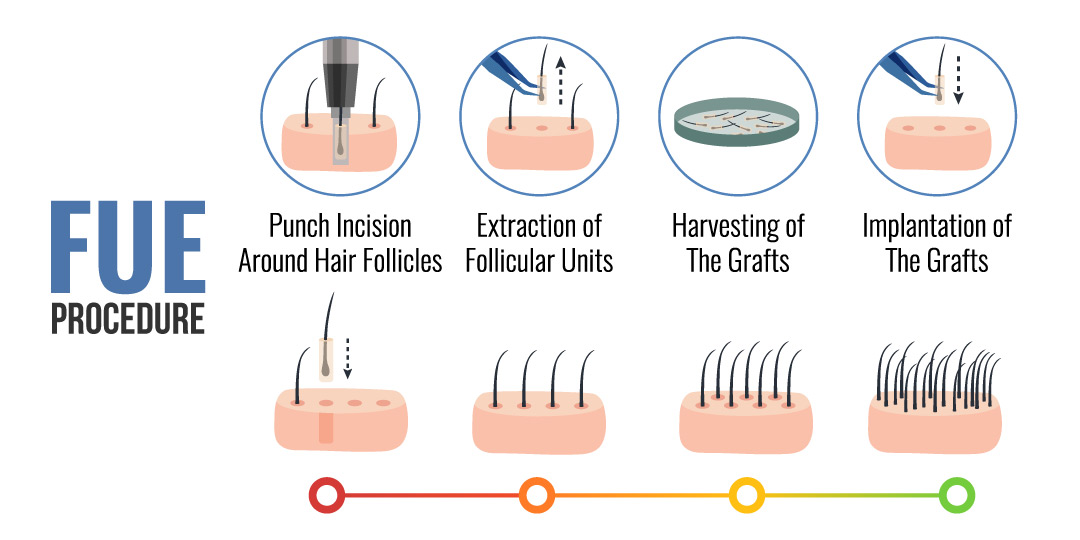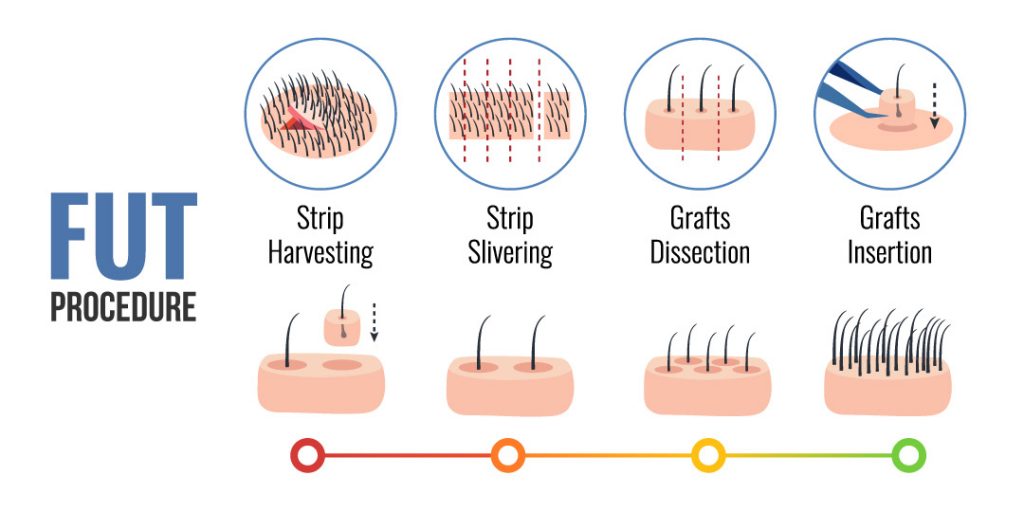
Hair loss, a common issue impacting approximately 85%men and 40% of women, is a troublesome and unlucky condition affecting individuals physically and psychologically. Fortunately, hair transplant operation has been at the forefront of solving hair loss problems permanently for a long time. Hair transplantation has been performed for a long time. The first hair transplant was performed in 1952 in New York. Since then, thanks to technological advancements, hair transplant procedure has come a long way to provide the safest operation, minimally painful and invasive procedure, and optimal results.
Those experiencing male or female pattern baldness, and decided to have a hair transplant, are now seeking the best technique for the procedure and the best service. There are primarily two hair transplant techniques; one is FUT (Follicular Unit Transplant), which is the oldest hair transplant method, and the other one is FUE ( Follicular Unit Extraction), which is the most favorable one nowadays.
How do you decide which technique you should go with?
It is a fact that both technique has advantages and disadvantages. Besides, it should be remembered that every hair loss case is different. Therefore, while choosing the hair transplant method, it is essential to consider the individual’s specific needs and expectations. However, it is also known that the FUT hair transplant technique has lost its fame over the years thanks to the advancements in hair transplantation.
Let’s see the pros and cons of two hair transplant techniques and why people no longer prefer FUT hair transplantation.
FUE vs. FUT Hair Transplantation: How are They Performed?

As mentioned before, a balding scalp can cause significant stress and low self-esteem in individuals. Additionally, hair transplant procedures may cause the same level of stress. First, a hair transplant operation is a long-termed procedure taking approximately 4-8 hours (depending on the extent of the hair loss.) During the operation, it is critical to stay calm and relaxed. Therefore, a smooth and minimally invasive procedure always gives the patients the courage to handle the surgery.
FUT, one of the first methods developed for hair restoration surgery, has been used for several decades. FUT hair transplant involves removing hair-covered skin from the back or sides of the head. The strip is cut into smaller pieces containing hair follicles. The surgeon then makes tiny cuts in the balding area and places the hair follicles into these cuts.
Since the FUT hair transplant technique involves making a long incision to remove a strip of hair-bearing skin from the donor are which is then sutured or stapled closed, this technique is considered an invasive hair transplant method, which requires a longer recovery time. Even though FUT hair transplant provides a good density for the patients, its invasive nature disheartens many. Therefore, hair transplant patients tend to have minimally invasive hair transplant techniques such as FUE or DHI (Direct Hair Implantation) hair transplant, a different version of the FUE hair transplant procedure.
So, what is the newest technology in hair transplantation? How is an FUE hair transplant performed? Why have people preferred FUE recently?
In today’s world, technology in every aspect of life keeps developing. Hair transplantation is one of them, gaining popularity thanks to new advancements and innovations. FUE hair transplant, one of the newest methods many surgeons perform, is a safer and less invasive way to regain one’s hair. During the FUE hair transplant procedure, instead of removing a strip of hair, the surgeon extracts hair one by one from the donor area and prepares hair follicles to be transplanted in the recipient area. The procedure is performed under local anesthesia, as with any other hair transplant procedure. Because the grafts are removed one by one, the duration of the operation can take longer than FUT hair transplantation. However, the FUE hair transplant procedure is much smoother, and the healing time is shorter than that of FUT. FUE hair transplantation offers patients a high success rate and desired outcomes, ensuring a smooth and effective procedure.
FUE vs. FUT Hair Transplantation: A Comparative Analysis
Follicular Unit Extraction (FUE):

FUE hair transplant process
Procedure: Hair grafts are extracted directly from the donor area individually using a small, round punch tool leaving tiny and round scars virtually invisible.
Scarring: FUE leaves small, scattered dots on the donor area, which can be easily concealed, especially with longer hair.
Recovery Time: FUE typically has a quicker recovery time than FUT since it doesn’t involve a linear incision.
Advantages:
-
- Minimally invasive.
- The best technique for those suffering from severe and extensive hair loss
- Stitchless and sutureless.
- Less discomfort during and after the operation.
- No visible linear scar.
- Lower risk of complications.
- Versatility; it can also be performed for beard, mustache, and eyebrow hair transplant.
- Faster recovery time.
Disadvantages:
-
- Generally more expensive than FUT due to the complexity of the extraction process.
- Time-consuming, especially for extensive sessions, as each follicle must be extracted individually.
Follicular Unit Transplantation (FUT):

FUT hair transplant process
Procedure: FUT involves the removal of a thin strip of skin from the donor area, typically from the back of the scalp. The strip is then dissected into individual follicular units under a microscope before being transplanted into the recipient area.
Scarring: FUT leaves a linear scar on the donor area, which can be noticeable if the hair is cut very short.
Recovery Time: FUT may require a more extended recovery period due to the linear incision that needs to heal.
Advantages:
- More cost-effective compared to FUE.
- Faster procedure time since many follicles can be obtained from a single strip.
Disadvantages:
- Leaves a visible linear scar on the donor area, making it less suitable for those who prefer shorter hairstyles.
- Stitches and sutures, which give discomfort after the operation.
- Post-operative numbness in the donor area.
- Risk of scalp stretching while removing the strip of hair during the procedure.
- Higher risk of complications such as infections, wound healing issues, and nerve damage.
- Requires longer recovery time.
In conclusion, while FUE and FUT hair transplant techniques have advantages and drawbacks, FUE has emerged as the preferred option for many individuals seeking a safe, minimally invasive, and natural-looking solution for hair loss. Its stitchless approach, virtually invisible scars, and faster recovery time make it an appealing choice. However, the final decision should be based on individual circumstances and consultation with an experienced hair transplant surgeon. Whether you choose FUT or FUE, you should keep in mind that you should follow aftercare instructions of hair transplant as pos-op process iss very crucial. To learn more about hair transplant in Istanbul, Turkey, you can always get in contact with MCAN Health’s medical experts.
 Pregnancy and Plastic Surgery Procedures – All You Need to Know!
Pregnancy and Plastic Surgery Procedures – All You Need to Know!  Lymphatic Massage After Liposuction, How Often and How Many?
Lymphatic Massage After Liposuction, How Often and How Many?  What Is Stem Cell? How Can It Be Beneficial for Treating Hair Loss?
What Is Stem Cell? How Can It Be Beneficial for Treating Hair Loss?